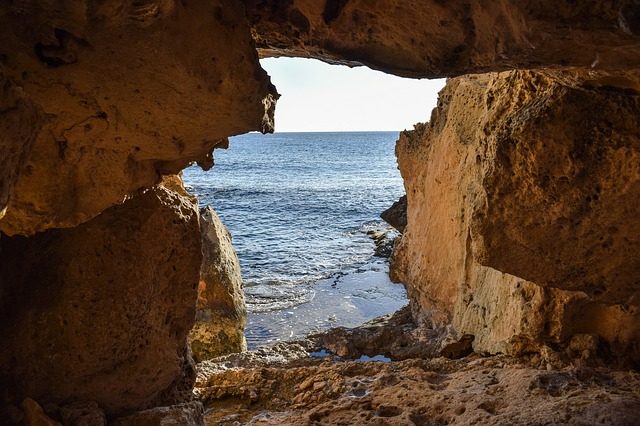The discovery of a 90m-long sea cave concealed in the rocky outcrop could now make Loliem beach a major tourist attraction. Loliem lies just 15-20 kms away from the famous Palolem and Agonda beaches. Though a lesser frequented beach, it could soon become a major attraction. What makes it important is that this sea-cave is wave-cut and the only one of its kind in and probably around Goa. A geological wonder, though small, (compared to the world’s most extensive 1.5-km-long Matainaka cave in New Zealand), is likely to put Goa on the world sea cave map.
How do sea caves come into being?
“Sea caves are carved through erosion usually in the weak areas such as faults and fractured areas. Initially, the carving by wave action begins with narrow cracks in the rocks,” says geographer F M Nadaf. In India, sea caves are a rarity. The one at Cupan, Loliem, is L-shaped. Formed naturally due to the erosion of metabasalt rocks caused by powerful wave action over thousands of years. Nadaf has an interest in coastal geomorphology. He explains that the dynamics of sea waves put massive pressure and penetrate into the cracks, resulting in erosion.
According to Nadaf, the Canacona coastline is unique. The sea and forest merge at many places like Palolem and Talpona. “Unlike Salcete’s smooth coast, Canacona is largely rocky with beaches, caves, bays, cliffs, headlands, spits, bars and other coastal features,” he says. “The rocks have developed multi-cracks and are in the process of decomposition,” says Nadaf.
Loliem beach has a beauty of its own. The shore boasts of hardly any sand except a carpet of weathered material from long-term erosion.
Goa has always been famous for its white sandy beaches, churches, temples, springs and waterfalls beside its scenic beauty. Now adding one more feather to its cap, Goa makes it to the world map for its own geological wonder, the sea-cave of Loliem.
(Information credit:ToI)


